The Principles and Cost of Making Trading Apps Like Robinhood
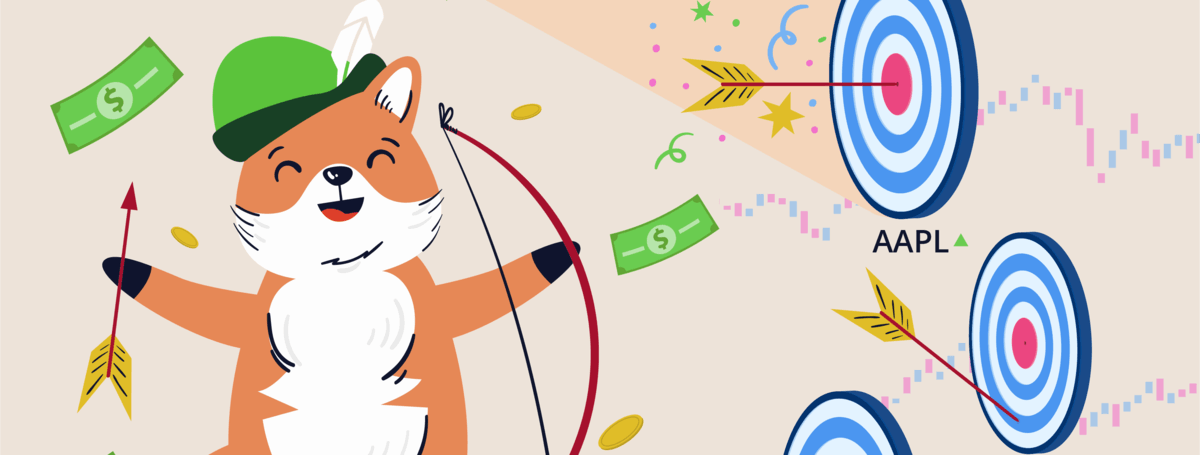
With modern customers preferring smartphones to computers and landline phones, brokers and investment platforms couldn’t help but follow other industries’ example and bring stock trading on mobile. Launched in March 2015, Robinhood’s mobile app pioneered zero-commission trading removing the barrier for beginners. Since then, stock trading companies such as Charles Schwab, E-Trade, Interactive Brokers, Merrill, and others have been attracting millions of users to their mobile trading apps. COVID-19 only reinforced their advantages.
2020 actually saw increased demand for online trading solutions and record growth of trading apps like Robinhood in particular. Robinhood alone added three million new accounts at the beginning of 2020. Around the same time in 2021, another six million joined the customer base, and currently, it totals 31 million.

According to their S-1 filing with the Securities and Exchange Commission, the company earned a net income of USD 7.45 million on net revenue of 959 million last year. In the first quarter of 2021, their revenue was $522 million, up 309% from the earnings in Q1 of 2020.
User-friendly stock apps like Robinhood appeal to massive audiences because they facilitate investing for people with no economic background or prior experience and at minimum cost. People who want to experiment with trading can do so without risk of losing a fortune as long as they invest prudently.
New trading app developers should definitely prioritize mobile devices. People can use a mobile application at any convenient time, even on the move. It does not require a dedicated workplace with a desktop computer.
If you already have an online brokerage web application, a mobile version may help you attract younger audiences. Your mobile trading platform will also offer them greater security provided by modern smartphones.
Moreover, mobile apps offer enhanced monetization possibilities, such as various ad formats and modular structures with paid add-ons or access to advanced functions.
The traction these online trading platforms have gained among the users is going to reach greater heights in the times to come. If you consider building an investment app, here you can find some valuable tips. Such app development requires a solid understanding of the stock trading app market and its major players. Let’s start with Robinhood itself.
Robinhood’s Services and Advantages
Robinhood is a web and mobile investment platform. Its users can buy and sell more than 5,000 stocks, Exchange-Traded Funds (ETFs) listed on American (and even international) exchanges, options, American Depositary Receipts for 250+ global companies, and cryptocurrency without paying commissions or fees. It also offers the ability to purchase fractional shares of stocks and recurring investments for long-term strategies.
Robinhood uniquely allows users to trade cryptocurrencies in the same account that they use for equities and options. The cryptocurrency trading includes Bitcoin, Bitcoin Cash, Bitcoin SV, Dogecoin, Ethereum, Ethereum Classic, and Litecoin. The app allows for placing trades in small quantities.
The fractional shares functionality also lets users buy a portion of a share for as little as $1, even if that share’s full price is hundreds of dollars.
Fractional trading pairs perfectly with recurring investments. A user sets a schedule (weekly, biweekly, or monthly) and a dollar amount, and Robinhood will automatically invest the money as scheduled in the stocks or ETFs of their choice.
Once a customer has fractional shares enabled for their account, they can also enroll in a dividend reinvestment program (known as a DRIP) for building wealth over time.
Robinhood Gold, the app’s premium upgrade, enables users who are more experienced and willing to take greater investment risks to trade on margin, i.e. money borrowed from the broker.
Robinhood offers a cash management account. Customers who make it into the program can earn modest interest (0.30%) on their uninvested cash. The account comes with a debit card and the ability to withdraw cash for free from 75,000+ ATMs thanks to Robinhood’s agreements with several FDIC-insured banks.
Customers have immediate access to deposited cash. Instant verification with several banks spares users the trouble of reporting micro-deposits to an account to verify the information. The proceeds from selling stocks and bank transfers below $1,000 are available for investing instantly, without waiting the usual two trading days.
Robinhood’s interface is deliberately simplistic and may lack some of the bells and whistles of a typical online stockbroker. It basically works around two work screens — the dashboard and the detailed stock screen — and supports market orders, limit orders, stop-limit orders, and stop orders. This may suffice even for knowledgeable investors.
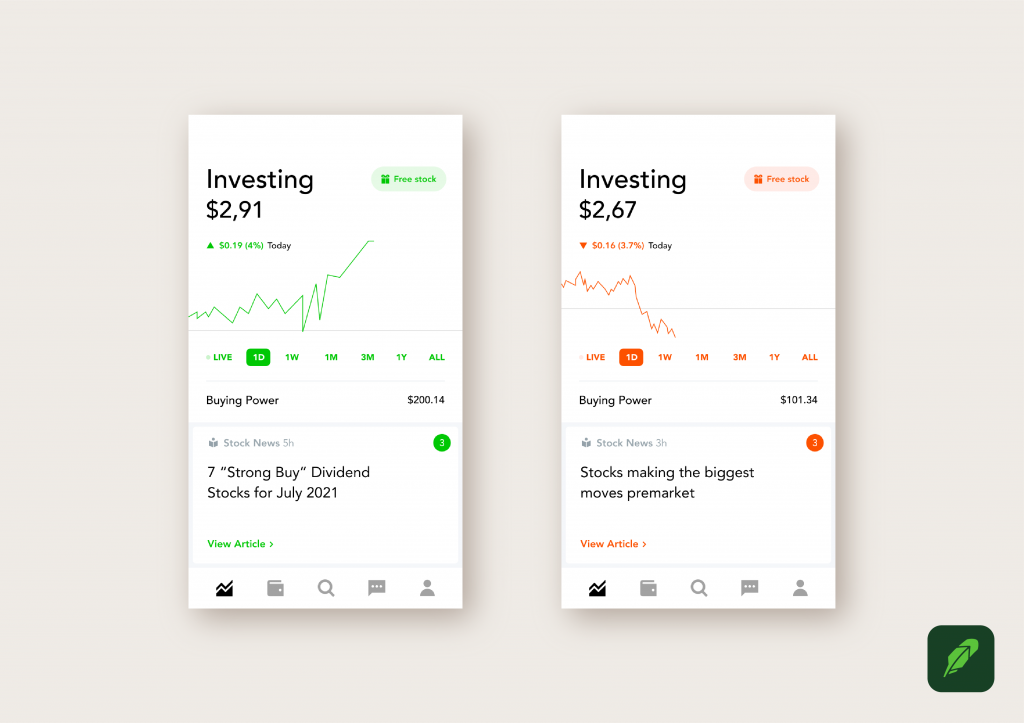
For newbies, the app provides a smooth on-ramp to investing, especially for those exploring stocks and ETFs. Users create their investment portfolio and trade stocks, receiving real-time market data relating to ‘the hottest’ investment opportunities and push notifications about their stock positions, upcoming dividends, and other events. The app includes customizable alerts.
Users don’t need to keep an eye on the market all the time but can track the changes in specific stocks and their relevance to date. The first screen they see after login is a big line graph showing how their portfolio is performing. It updates automatically every five seconds.
A tab bar at the bottom of the screen offers quick access to portfolio values, Watchlist, transaction history, and account statements. There is also a feature called collections, which are stocks organized by sector or category, e.g., entertainment businesses.
The app offers its users analyst ratings, lists of top movers, earnings calendars, and links to live earnings calls.
The news feed is provided by Wall Street Journal Markets, Barron’s, and Reuters with videos from CNBC Business, Cheddar, and Reuters. Moreover, the service resurfaces information from its users to create its own universe of data. For example, investors can view the 100 most popular stocks on the platform and sort them by various criteria, including analyst ratings, what’s rising over a given period and what’s falling, market cap and price.
The stocks trading experience is streamlined and simple. There is a straightforward trade ticket on every quote screen for the stocks and ETFs tradeable on Robinhood. There’s also a referral program that enables users to earn free stocks.
Robinhood has integrated a well-established security system. Users log in with biometric (face or fingerprint) recognition or a custom pin. The app encourages users to enable two-factor authentication. If it’s not enabled, login from an unrecognized device needs to be verified with a six-digit code sent via text message or email.
Robinhood’s security system encrypts all confidential personal information of its users. The company is a member of the Financial Industry Regulatory Authority (FINRA) and the Securities Investor Protection Corporation (SIPC). The app also hashes users’ account passwords using the industry-standard BCrypt hashing algorithm.
Besides the numerous advantages to using the service, Robinhood has some downsides as well. It’s wise to know them: the elimination of any of their weaknesses can become your product’s competitive advantage. For example:
- Robinhood doesn’t provide retirement accounts or managed portfolios.
- Some investors may find the range of tradable securities and order types lacking.
- Others criticize Robinhood’s options trading for its poorly designed interface and lack of tools for assessing potential profitability. The process of placing options trades may seem illogical.
- Robinhood updates the prices on the app and website every few seconds. This pricing data reportedly happens to lag behind other real-time market data providers by 3-10 seconds.
- The research and resources provided may also seem insufficient to some users, as does customer support that is primarily provided via email.
- Over the years, the app has also been the subject of complaints and even lawsuits due to technical problems. For example, throughout 2020 and into 2021, Robinhood experienced several extensive outages and other issues that disrupted the users’ activities or even rendered the platform inaccessible.
Still, judging by the impressive financial numbers, the app’s advantages fully make up for all its drawbacks.

Entrepreneurs that want to build a Robinhood-like app may benefit from studying the Robinhood business model.
Robinhood Revenue Model
The app is free to download. The account minimum for brokerage and Gold accounts is $0, which means investors can get started right away. Robinhood doesn’t charge trading fees or commissions for selling or buying stocks, ETFs, options, and cryptocurrency. There are no annual, monthly, inactivity, or ACH transfer fees either.
Why is Robinhood free? There are several answers to this question. From the onset, the absence of commissions for transactions and requirements for minimum investment set it apart from the crowd of competitors. Before Robinhood, people who wanted to invest in stocks would be charged $5-10 per trade and had to spend at least $500 to open an account.
Robinhood founders wanted to ‘unlock the micro-investor market’ and ‘democratize’ the world of finance for all, and this unique value proposition helped attract the first adopters quickly. In 2014, 340,000 had signed up to the app’s waitlist, and the number had reportedly doubled by the time it was formally launched.
After other online investing platforms followed suit, Robinhood is no longer the only free brokerage app in town. However, it remains competitive and continues to grow. Thus, despite its commitment to offer free-of-charge trading, the approach is apparently effective.
Secondly, the truth is that Robinhood isn’t absolutely free. Users may have to pay for a variety of services.
Paid premium version
The app’s paid version, Robinhood Gold, is supposedly the company’s second major source of revenue. The opt-in service comes at a flat monthly fee of $5.
In return, Gold members enjoy extended trading hours, access to in-depth research from Morningstar on 1,700+ stocks and Level 2 market data powered by NASDAQ TotalView, and extra buying power due to the ability to borrow money when they wish to purchase stocks. Users can try the Gold service out for 30 days free of charge.
Developers of stock apps like Robinhood should definitely prioritize the freemium business model. Users, especially as they become more experienced and enthusiastic traders, will deem it fair to pay an extra fee to unlock advanced features and additional capabilities.
Additionally, or as an alternative, you may market a subscription for VIP 24/7 customer service or other perks. Make sure to integrate various payment methods for the convenience of all users.
Margin lending
A Robinhood Gold subscription of $5/month includes $1,000 of margin. Margin usage over $1,000 is charged 5% interest.
Miscellaneous fees
Other fees unrelated to trading include:
- Robinhood charges a $75 outgoing account transfer fee when a user transfers their investments to another broker.
- The prices for sending or receiving a wire are $25 for domestic and $50 for international wires.
- Users are also charged $35 to send a domestic check overnight.
- The live broker fee is $10 per transaction.
Additionally, a $2,000 minimum portfolio balance is required to open a margin account. This is a FINRA regulation that all brokers must follow.
These fees and commissions are visible to customers, but the diverse Robinhood revenue model includes other methods that they cannot see:
Payments for order flow
Robinhood reportedly makes half of its money through a system called payments for order flow (PFOF), i.e. for directing its customers’ equity and options orders to market makers. Essentially, Robinhood sends each trade to a larger entity that can leverage thousands of orders at once for a slight advantage. That entity then compensates Robinhood for the orders. This means that the more often a user buys and sells, the more money Robinhood makes, even when the user loses money with each tap.
Robinhood may receive less than one cent for executing one trade, but with millions of users, it can earn significant revenue. The company generated $682 million in PFOF revenue in 2020, a 514% increase compared with the previous year.
Interest earned on users’ cash balances
Robinhood users who sign up for its cash management program with a Mastercard debit card can earn 0.30% APY on their idle cash swept to its partner banks network. Robinhood accepts fees from those banks and keeps a small portion of the interchange fees levied on transactions made with those debit cards.
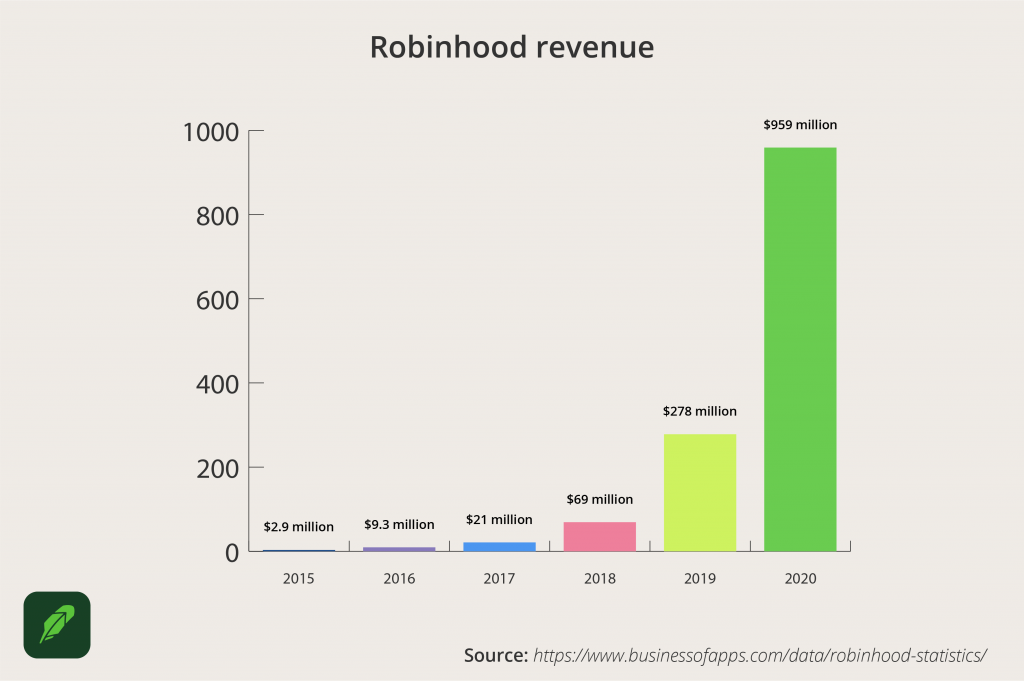
Another answer to the question is that Robinhood’s compelling business model reduces the need for commissions. The company itself is relatively small: there are no big offices, staff, or large-scale public relations campaigns. Robinhood also seems committed to keeping its investor costs low. The Clearing by Robinhood service allows them to operate on their own clearing system, which reduces some of the service’s account fees.
You may copy the Robinhood business model precisely, modify it at your discretion, e.g., opt for distributed workforce models, or employ different monetization methods.
For one, advertisements present the most popular monetization method for free mobile-first platforms. Partnership with ad networks may be extremely lucrative, but if you decide to leverage this method, make sure to integrate ads into your app experience naturally, in some native formats.
Robinhood doesn’t, but brokers may generate revenue through stock loan programs when the stock held in a user’s account is loaned to another trader or hedge fund, usually for selling that stock short.
For those users who are well-versed in the stock market dynamics, you can offer deals with high-risk exposure and charge a commission on such deals once the transaction amount exceeds a certain threshold.
Last but not least, there is an option of charging commissions for every trade performed via your app. However, remember that it may be extremely difficult to compete with rival apps that offer commission-free trading. This approach may narrow your target audience or scare them away altogether.
Robinhood works on the do-it-yourself (DIY) principle: investors create and manage their own portfolios without any assistance from professional advisors. Aside from DIY platforms, another type of investment apps is trending — robo-advisors. These apps provide users with financial tips produced by algorithms, artificial intelligence, or mathematical formulas.
First, a user typically fills out a digital survey. The robo-advisor uses the collected information to provide automated financial planning services. Often, robo-advisory firms also ensure easy account setup and portfolio management, with opening balances starting from a few dollars.
Most robo-advisors generate revenue through account fees. They normally charge annual management fees not exceeding 0.75 percent of the assets under management. The convenience and affordability of robo-advisors make them attractive for beginner traders.
Other investment apps provide both DIY and robo-advisory investing. It appeals to those people who rely on technology but still want control over their investments. M1 Finance is an example of apps that combine elements of traditional online brokers with robo-investor trading tools.
Users are free to decide how to allocate their funds but don’t have to puzzle over how to move their investments or balance their portfolio: robo-advisory functionality is there to help.
There’s one more type of hybrid investing app model to consider. Apps such as Round, Freetrade App, or Personal Capital allow users to get support from human advisors. Like robo-advisors, such apps may ask people to fill out initial questionnaires to collect data on their investment goals, history, and risk tolerance. Once the data has been processed, the person can get the appropriate help from a professional investing assistant.
In Round’s model, fund managers invest on a user’s behalf and monitor investments daily. Investors are charged a 0.5% annual management fee (paid monthly) but don’t pay in months when their portfolio value goes down.
Personal Capital offers wealth management and personalized advisory services. It assigns each investor a dedicated financial advisor who will discuss their financial goals and suggest suitable actions, set up accounts for transferring assets, review and personalize the client’s portfolio, set the portfolio allocation, and adjust that allocation over time. The firm’s all-inclusive fees range from 0.49% to 0.89%, depending on the volume of assets under management.
Whatever model you choose, one of the most effective and straightforward ways to make your product profitable is going for a modular structure that combines features into functional blocks. This approach enables you to add new app features and investing capabilities as the market dictates and offer different sets to different groups of users.
Probably, you will not cover all the user needs and provide every possible functionality in an MVP or the first version of your app. Based on our experience in app development for various sectors, we can tell that the optimal approach is to build an MVP first and then add features as your app gains ground among users. Thus, it is crucial to focus on the most demanded, useful, and potentially profitable features.
Core Functionalities of Stock Trading Apps Like Robinhood
Stock apps like Robinhood share a distinct set of features that are most valuable for users. They primarily revolve around trading stocks, searching, and tracking the stocks that the user owns.
A modular structure of your stock trading application will ensure easier access and better usability. This type of app design promotes various monetization plans based on the availability of features and lets you create several versions of the app with limited or more focused functionality. Here are the essential functionalities that should be implemented as separate, possibly paid, modules in your product. The order of the features does not reflect their relative importance or the app’s user flow.

1. Check-in process
The authorization process has to be easy while promoting safety. Offer users multiple check-in options, such as using pin code, biometrics, etc.
Drive inspiration from Robinhood’s quick and smooth sign-up and account funding process. A few questions gather a user’s personal information, contact details, Social Security number, and means of funding their account. Approved customers are notified within an hour, after which they can initiate bank transfers.
2. User profile
A user account functional block should include profile data and history, task management functionality, and preferences related to notifications, frequency in which the account should be debited, etc. It may also have partial integration with the user’s Apple or Google account, e.g., for data synchronization with Google Calendar.
3. Dashboard
All investing apps have an account overview somewhere for the users to track their portfolio. Robinhood’s dashboard provides users with all information an investor should know: order status, Watchlist, balance, charts, holdings, etc., all in one place. When building your app, ensure that all such crucial information is displayed in a comprehensible manner, without causing information overload.
4. Portfolio
Robinhood lets users create a passive investment portfolio containing stocks, bonds, and other financial assets. This means that besides buying and selling stocks individually, users may rely on an automated algorithm to invest for them. A filter and sort functionality will help app users find what they are looking for.
5. Real-time market data
Users should be able to get all the latest financial market insights, i.e. falls and rises in their portfolio and which stocks are trending in the market, in one place. Robinhood provides its users all the market data in real time, empowering them to know where they stand investment-wise and make better-informed purchase and selling decisions on the app platform. They can simply tap on any asset and see its current data, such as the last sale, best bid, and best ask price across all US exchanges. Every quote contains the price, number of shares, and exchange.
When building your stock trading app, make sure the various figures and analytics are well-structured and organized so that even new traders can better understand the technicalities of the financial markets. Relevant financial data, including price fluctuations, can be displayed in the form of graphs, chart pies, candlestick charts, etc. Various filters and search and sorting capabilities can enhance the experience.
6. Watchlist
Robinhood’s Watchlist feature conveniently lets its users track the performance of stock they are interested in and then buy or sell those stocks. The search function uses reveal animation and autocomplete to make it easier for users to find more companies to add to their Watchlist.
To help investors get the latest trading price of a particular stock or stocks without searching for them individually every time, give users the option to add the stocks to the Watchlist and then unfollow them as needed.
7. Stock trading functionality
A trading module with buy and sell functions is the core of applications like Robinhood. Since users interact with this module most frequently, make the entire process of holding, buying, and selling as straightforward and hassle-free as possible. You can advantageously combine it with means to check bids and deposits, monitor transactions, and receive payments in several forms.
Users need the option to search for active stocks’ present rates in the market. In Robinhood, an order ticket pops open whenever users are looking at a particular stock, option, or crypto-coin.
8. Notifications
Another essential step in your trading app development process would be to integrate push notifications. It’s helpful to inform users of how their portfolios are moving, update them on a hot investment opportunity, or remind them about dividends on investments and upcoming investment events. Moreover, this feature helps the app owner keep in touch with users and urges them to open it again and again.
The module can be configured for sending updates to a user when a preset condition is met, e.g., a price reaches a set threshold. These messages may be communicated not only via push notifications but also as SMS or emails. Enable users to choose the events worthy of notifications and to time them conveniently, so they don’t become a nuisance instead of a benefit.
9. Fund transfer functionality and deposits
Users need to transfer funds from their bank accounts to the investing application to start operations and then monetize their revenues securely and effortlessly. They need the option to go for either one-time transfer or periodic transfers.
App developers should give special attention to ensuring convenient and secure transfers of the customers’ funds to and from trading accounts in several ways. In optimal scenarios, the app should support bank transfers and worldwide payment systems, such as Mastercard or Visa, online services like Paypal, Amazon Payments, or Dwolla, and the possibility of cash withdrawals. The integration with Google Wallet/Checkout and Apple Pay is essential.
If you plan cryptocurrency trading, it is naturally required to allow their use as well.
Investors should be able to see the status of their deposits with minimal effort. Enable the users to monitor their flow of funds in real time.
10. Newsfeed
A news module is one of the most crucial features for a Robinhood-like app that targets new investors and the amateur category. Such a newsfeed will be offering them daily information on relevant topics and events in the stock industry, such as the latest M&As, IPO details, external factors that influence market prices, etc., as well as possibly daily tips from experts.
Even savvy investors will benefit from an opportunity to explore the stock market further by observing how it is moving, getting insights into what events would increase or decrease the stock value, or learning what to expect from their portfolio or the stocks they are interested in.
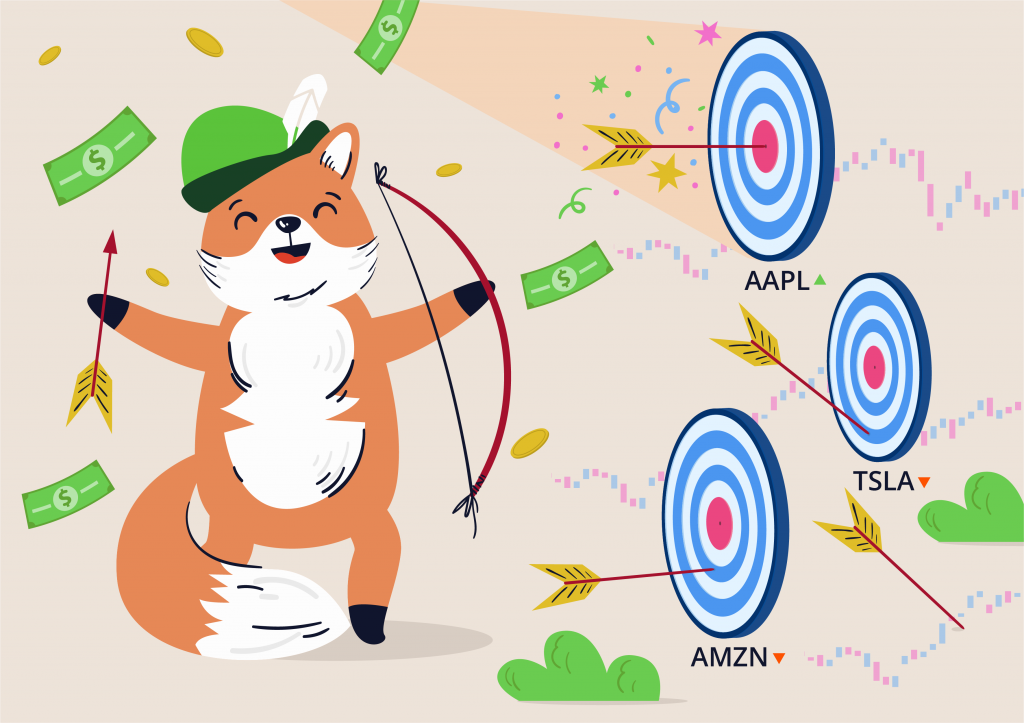
App developers should think through seamless integration with online newspapers and other media channels and possibly cooperation with third-party analysts.
These features should make the core of your brokerage app. If you want to attract wealthier and more experienced traders and offer premium packages, you can integrate detailed schemes, trading tools, and transactions, extend the set of order types, offer complementary financial services, a tax protection plan, increased security measures, or other advanced options for extra fees.
Alternatively, you may plan features that will appeal to specific groups (e.g., finance novices, youth, or lower-income populations) and set you apart from the competition. This can be an optimized monetization model, more appealing terms for traders, and so forth.
Nice-to-have Features of Stock Apps Like Robinhood
Some of the additional features to consider include, but are not limited to:
Analytics. The stock market participants would appreciate an opportunity to look at the statistics and analyze the results of their trades, transactions, etc.
Communication module. To support user communication, feedback, and other information sharing, the app may integrate direct messaging. It would help to offer a forum where users can discuss the market with other investors on your platform, continuously learning from each other. The app developers have to ensure the confidentiality of such public or private channels.
Simulator. The app may provide a virtual environment for people to test their skills and practice online stock trading without risking their money. It can be linked to a tutorial or at least a glossary for entry-level users.
Educational elements. Your learning materials should at least explain to new investors the basics of the stock trading industry.
Make sure your product includes at least one feature that can help you beat the rivals. A more intuitive and appealing app interface can be one of those aces up your sleeve.
Good UX increases your chances to satisfy broader audiences and sustain the competition with industry leaders. Selecting and designing the core and add-on functionality, you need to take into account the psychology of your customers. Robinhood’s UX/UI design vividly demonstrates its importance.
Robinhood’s Successful UX/UI Tips and Tricks
Stock trading is tough all by itself, and users, especially busy investors, cannot waste their precious time trying to understand a specialized application’s rigging. Its interface should make complicated things easier for them, not the other way round. There is also a risk of overwhelming a user with data of various types (text, image, statistics, numbers, etc.). Moreover, the field of online trading is highly competitive. If users face any difficulty, they will likely leave the app immediately.
Creators of a new product should make its interface as easy to use as possible while protecting the customers against accidental unwanted actions. You need to choose if it will be a mobile or tablet application, what platforms it will cover, and with what devices it will be compatible. The size of screens may directly impact the interface, functionality, and content of your trading app.
Your development team may learn a lot from Robinhood’s designers. Their attention to detail and visual design and smart, tasteful application of material design principles helped Robinhood become the first financial app to win an Apple Design Award and win the 2016 Google Play Award for excellence in design.
Robinhood’s design was targeted at novices from the very beginning; it’s tailored to mobile devices, its logic is simple, and the graphics clear. The present mobile app has an intuitive and well-considered UI, is easy to navigate and use, and looks clean and beautiful on every device. Robinhood’s mobile apps and website are similar in look-and-feel, making it easy for customers to invest through either interface.
Streamlining the visual design has helped simplify the app’s complex capabilities. For instance, Robinhood simplifies a potentially tricky onboarding by guiding users through a series of animated transitions. Each prompt’s card features an illustration set against a bright green background, an optimistic play on the color of money. Motion is employed to help orient the user through the app’s core features. It takes only 5 minutes to perform the entire action, from signing up to actually buying the stocks.
Card patterns have been beneficial for organizing and grouping information, such as share prices, news, and notifications, within the app. They give the users small amounts of information upfront with the opportunity to dive deeper should they want to. For example, stocks in a portfolio are also represented by cards. When pressed, a card animates and fills the screen. A large number and a graph represent the value of the stock; both animate when the stock value changes.
Bold colors and typography create a visual hierarchy within the app, which focuses the user’s attention and reduces confusion. Robinhood conveys critical information using just four colors: white, black, green, and red. The swapping colors update users on important events and changes in stocks and personal portfolios.
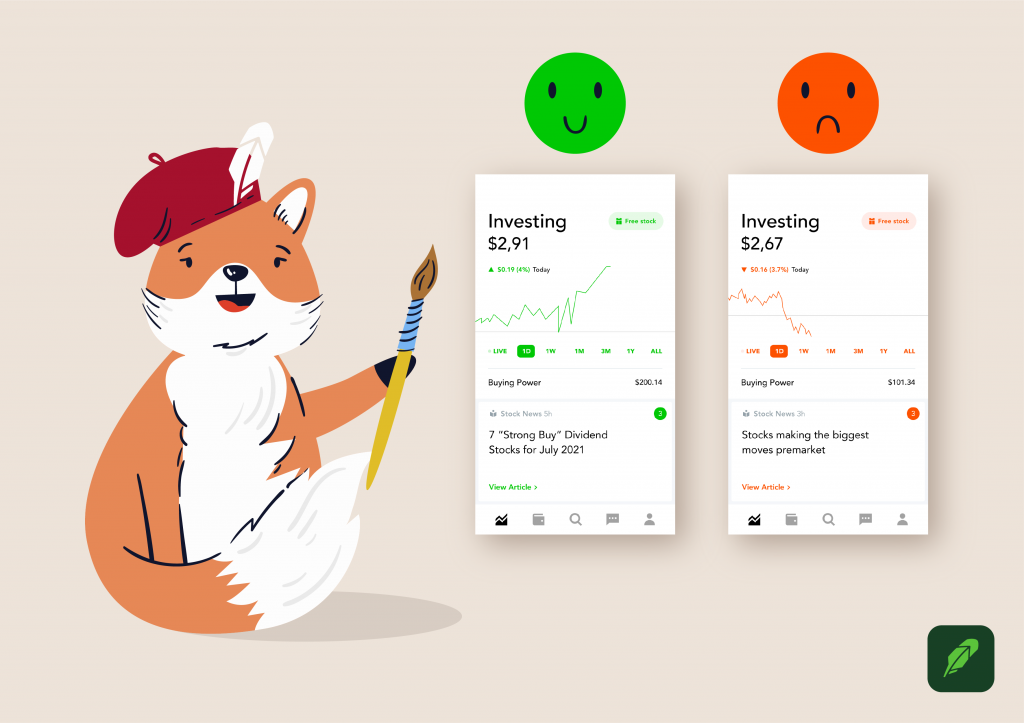
A full-flood background color lets users know when the markets are open or closed. After trading hours, the screen background shifts from white to black. Even when the stock market is closed, the dark background reminds users that they still can trade in the cryptocurrency market, as well as perform some non-market dependent functions.
Swipe gestures enable quick navigation and perform crucial functions like buying or selling stocks, instead of typical taps on the screen that may happen accidentally.
Additionally, Robinhood makes use of many micro-interaction elements that are not commonly seen in other information-rich applications. For example, multiple micro-interactions help in exposing detailed index information. You can see the price related to a specific period by holding and dragging the chart. As your fingers move across the screen, its x position aligns to the time in the chart.
Robinhood also tries to cater to different kinds of users. For instance, customers can easily switch between line charts and candlestick graphs. Line charts showing close prices provide a simplified view of trading, whereas more experienced traders may look for the information reflected in detailed candlestick charts. Each candlestick indicates four pieces of data: the open, high, low, and close prices during a particular period.
The basic premise of building a stock trading app is to encourage more and more people to invest as much money as possible. It may seem that Robinhood was designed to allow new users to impulse-buy. The app swaps the hallmarks of careful investment for hyperbole, fun, and immediate gratification.
Keeping users informed of the stock prices fluctuations is key to building trust. All apps let customers track their portfolio, but Robinhood makes this experience particularly urgent every time the app opens. If the portfolio is up, all UI elements on the screen, even those unrelated to stocks, are green. If it is down, even by one cent, every UI element turns alarmingly red. The user can launch the app and evaluate the health and activity of the stock market at a glance.
This visualization also creates the impression of an emergency, urging the user to act promptly.
Scrolling down the home screen, they see the news cards offered up by the Robinhood algorithm. They consist of news that could impact company stock prices. This helps further engage the user, already shocked by their ‘sinking’ portfolio, by suggesting a possible ‘cure.’
Only after scrolling past the news can they see their stocks. Robinhood displays each stock with its full share price in red or green according to its performance. However, the P&L, the actual amount of the user’s gain or loss on that investment, is shown only when they tap into a stock.
Robinhood’s underlying intention to get more users to trade frequently does not manifest itself in a readily available and prominent ‘Trade’ button. There are five buttons at the bottom, but no ’Trade.’ Instead, users have to click on the magnifying glass, which takes them to the Ideas screen, where they see popular lists, top movers, and more news to scroll. Understanding its core audience, less experienced traders, Robinhood feeds them ideas to drive their behavior.
This friction in the interface may slow down some traders, but it also prevents less experienced or ill-informed traders from rushing to wrong decisions. In this sense, the UX is designed to benefit users even if it seems contrary to Robinhood’s business plan.
The endless newsfeed is also meant to drive engagement, the chief metric of any mobile app. This feed may act to suck users into the drama of day trading, inciting the desire to buy or sell to be part of the moment.
Robinhood also masterfully leverages gamification to reinforce certain behaviors in its customers. For instance, they celebrate the purchase of even a tiny fraction of a stock. After each of the first three purchases, confetti drops from the top of the screen.
The idea of gifts, winnings, and free earnings is prominent to the app’s UI. Users receive free stocks for joining the app and for getting others to sign up. In the upper right-hand corner of the home screen, there is a ‘Free stock’ button complete with a wrapped present icon. Green when the user’s stocks are up and red when they’re down, it acts as a persistent invitation to win a mini lottery. When a user receives a free stock, the app displays three scratch-off tickets. To choose one, the user scratches their finger across the screen to see what they have won.
The winnings of an app owner may directly depend on how much they invest in the MVP or the first full-featured version of their mobile brokerage application. Here, we finally reach probably the most burning question the readers may have.
How Much Does It Cost to Make a Stock Trading App Like Robinhood?
It is not easy to calculate the exact cost of building a mobile app like Robinhood. The amounts can vary as per your needs and requirements, in the first place. Some of the factors that impact the final cost of such app development include:
- The number of selected features
- The complexity of the features and functionalities
- The design requirements
- Size of the application
- The choice of the platform(s), i.e., Android, iOS, both, and desktop
- The choice of development technologies (languages, APIs, frameworks, protocols, data formats, etc.)
- Market deadlines
- Team size
- Scope of testing
- Whether an in-house team, freelancers, or an outsourcing company builds the app
The frontend and backend development make up the bulk of the cost. Usually, it is calculated by multiplying the hours required for the app development by the corresponding specialists’ hourly rates.
To estimate the possible budget, you need at least to provide the development team with the list of required features.
Such a project may require a team composition including at least one person for each of the following roles:
- Project manager
- Designer
- iOS and/or Android app developers
- Backend developer
- Frontend developer (if you plan a web app)
- QA expert
- DevOps
The more roles you require, and the more people you hire for each role, the higher the project cost.
Keep in mind that app designers and developers in the USA or Western Europe charge more than their competitors from Eastern Europe or Asia. The specialists’ rates also vary depending on their skills and experience.
Ideally, stock trading apps should be operational on two platforms – mobile and desktop. The cost of app development also increases if you go for multiple operating systems simultaneously.
When it comes to the backend of stock trading apps like Robinhood, there are two approaches to choose from – Monolithic and Microservice. While Monolith is more cost-effective, Microservice backend promotes high scalability of an application.
The testing of stock apps like Robinhood that handle people’s money in real time comes with additional complexity and attached costs. The QA staff should cover the app’s work when the market is open, ensuring all the APIs are working correctly and the synchronization is flawless.
This being said, it’s still possible to assume that the development of an MVP for iOS and Android with the ten core features listed above cannot cost less than $100K.
Do you have an idea or a new stock trading app to bring to the market? Do you have doubts about its feasibility or market potential? Do you need assistance with any aspect of such app development? Do you have questions as to brokerage app functionality, design, technical solutions, or possible budget? In every case, please feel free to contact Alternative-spaces. Our team of experts is always there to help you!
Content created by our partner, Onix-systems.
 Home
Home